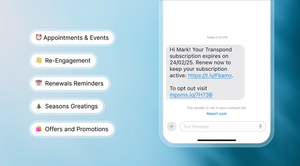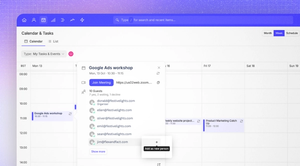You might have heard about inbound sales and outbound sales. A business that wants to run an efficient sales strategy should know what both methods bring.
Some brands succeed with inbound sales. Others find outbound sales is a better fit for them. A mix of the two is a worthwhile consideration.
Using real-life examples to explain inbound and outbound sales as a concept should help to bring this topic to life.
Examples of inbound sales
Inbound sales occur when the customer approaches the business without direct contact from the sales team. For instance, word of mouth or an ad they hear on the radio drives a potential buyer to enter the awareness stage.
An inbound sales process and marketing involves creating promotional material and distribution across different channels.
1. Selling from content marketing
Imagine potential customers thinking about a trip to Japan. They discovered a blog that produces regular content covering different things tourists can do in Japan.
The content is so good that the person who discovered the blog becomes a regular reader. This is where their buyer's journey begins.
Over time, the prospect saves enough money and can finally afford to travel to Japan. The blogger offers exclusive travel deals because they collaborate with a travel agency.
Blog readers become active buyers because all the time spent consuming content leads them to decide how to plan their trip.
2. Selling from Google Ads
Search engine adverts are the most straightforward example of inbound sales. You enter a keyword looking for goods or services, such as local flower delivery shops or cafeterias. Google or another search engine shows results to choose from, both organic and paid for. Paid adverts tend to be at the top of the page.
The sales process starts with the search and finishes with a conversion after clicking on an ad and getting redirected to a landing page where you can purchase the goods or services.
3. Selling from referral
Referrals could be an online conversation where two people discuss the best video games they've played this year. If you are into video games, you could use the discussion as a reference and buy these video games yourself.
Another example is custom print-on-demand merchandise. You meet friends wearing a cool T-shirt and ask them where you could get one for yourself.
In a sense, the friends become sales reps, explaining where they got the merch. Except they didn't have to bother with a sales pitch. You, as a customer, took the initiative and asked them.
4. Selling from social media marketing
Many brands use social media to create marketing materials like static image ads or videos. Relevant content gets discovered by new customers. The target audience then enters a consideration stage, looking at the ads.
If they like what they see, they will become interested prospects and start their buying journey. This way, the marketing activity by the marketing team on social media translates into inbound sales.
Examples of outbound sales
Outbound selling requires direct involvement from a sales rep to offer a product or service directly to a lead. Outbound leads don't usually express interest in a good or service, so attracting potential customers can be tricky.
To seek qualified leads, sales reps utilize cold calling, traditional sales methods, email marketing, social media, and other outbound sales tactics.
It's all about convincing potential buyers to become interested. Passive buyers might not even know about their current pain points, but a good sales rep can persuade a potential customer by playing their cards right.
1. Social selling
Selling on social media doesn't start and end with an inbound sales strategy. Outbound marketing strategies also revolve around LinkedIn, Facebook, Instagram, and other social media platforms.
Sales reps reach out to business owners or regular people for an initial contact. If the prospect is interested, the next step is to arrange a call or a meeting in person to discuss the details and close the deal.
2. Cold outreach
Cold outreach via emails or phone calls is quite popular. Let's say that a sales rep from a company that builds custom gaming computers has a list of qualified leads—a demographic that is into gaming and prefers PCs over consoles.
The outbound sales process continues with a call or an email inquiring about a lead's interest in upgrading their current gaming computer. The sales representative delivers a pitch and either fails or succeeds.
3. Live events
Live events, such as trade shows, are a bit of a mix as far as inbound sales and outbound sales go. From one perspective, it is up to the business to showcase its goods or services and present them in a way to attract potential customers.
On the other hand, people who visit these trade shows can be considered inbound leads. After all, they are interested enough to come. Still, it's mostly up to the sales professionals to do their magic and establish a sales relationship that leads to sales opportunities and conversions.
4. Door-to-door sales
As far as outbound sales strategies go, door-to-door is a rather outdated concept. Sales representatives don't really qualify leads. They just go from one door to another, hoping that their sales methodology brings results.
Advantages and disadvantages of inbound sales and outbound sales
Here are the lists of the advantages and disadvantages of inbound sales and outbound sales.
Inbound sales advantages
1. Smooth sales funnel
The inbound sales funnel is less complicated because leads reach out to the business rather than the other way around. Every prospect is already a potential customer. An inbound salesperson has to push the prospect in the right direction.
2. Brand awareness increase
Inbound sales marketing encourages word of mouth in real life and various online platforms. Solid results lead to raising brand awareness, which can help with generating leads even further.
3. Reach to modern buyers
Modern buyers have a tendency to look for solutions themselves. Inbound marketing allows them to look up problems online and get redirected to a landing page that offers a way to solve a problem.
Outbound marketing methods like cold calling or door-to-door sales are not considered particularly efficient nowadays, so it's a clear area where inbound sales have an edge.
Inbound sales disadvantages
1. Time investment
Time investment, particularly for small businesses, poses a challenge when crafting inbound marketing strategies. Differentiating personas, identifying their challenges and thinking of ways to present your brand's values are not as easy as one might think.
2. Dealing with content overflow
Content overflow is another example of a problem that inbound marketers have to consider. The internet is saturated with all kinds of content, so crafting something unique may be a noticeable obstacle. Even more so when you have to stick to a content schedule and publish something on a regular basis.
3. Resources for sales and marketing teams
Inbound sales involves both sales and marketing teams. There might be instances when the two clash due to poor alignment. Finding success is more or less impossible if the two teams cannot coexist.
Outbound sales advantages
1. Quick ROI
Many businesses consider return on investment a crucial metric. Outbound sales professionals can quickly get a lead and close it, which brings a significant ROI.
2. Direct control for the sales team
Sales reps are in direct control. They decide how to do the job and don't have to rely on a marketing team that produces materials.
3. Direct interaction with prospects
Direct interaction with prospects is another solid advantage. It's easier to determine a course of action when you talk to a prospect in person or on the phone, for example. Being in control puts the sales rep in charge.
Outbound sales disadvantages
1. Prospects might get annoyed
Plenty of prospects find outbound sales annoying. They don't want to receive phone calls or see sales reps at their door. There's no telling how angry a prospect might get since the sales reps don't know potential customers in person.
2. Tricky to scale
Scaling is tricky because outbound marketing requires a sheer number of direct interactions with potential leads. Businesses that struggle to find a decent budget are bound to bottleneck sooner rather than later.
3. Biases in feedback
Feedback management helps brands evaluate whether the currently implemented strategies bring value or not.
For outbound sales representatives, they operate independently for the most part. Hence, they might be biased in how they view their work. Feedback from outbound sales reps isn't always genuine.
Similarities and differences between inbound sales and outbound sales
Understanding the similarities and differences between inbound sales and outbound sales ought to help decide which of the two you should use.
1. Target audience
As far as the target audience goes, both inbound sales and outbound sales aim to target ideal customers.
The difference comes in the context of accessibility. Inbound sales have much more reach because marketers create the material for a wider audience.
Meanwhile, outbound sales strategies involve targeting specific individuals, which takes more time and preparation.
2. Business size
Both inbound sales and outbound sales are fine for businesses of any size. It comes down to preference and business types.
For example, B2C brands usually sell commoditized or lower-priced products or services, so they target a wide audience and use inbound sales.
Alternatively, B2B companies operate in long business cycles with smaller target audiences. They tend to ignore inbound sales methodology and focus on a narrower targeted demographic.
3. Potential to scale
As one would assume, inbound sales and outbound sales both offer the potential for a business to scale.
In the case of inbound sales, it grows with the business itself. Inbound salespeople and marketers don't necessarily have to write ten more social media copies if there are more customers buying via social media. That one copy every week will do just fine if its quality remains solid.
Unfortunately, the same cannot be said about outbound sales. Unlike inbound sales, outbound marketing requires direct impact from the sales reps to generate leads and nurture customers.
Reaching higher quality leads can become tricky with insufficient resources too, since you must dedicate them to scaling sales teams and other aspects.
Having said that, there are tools like Capsule that make customer management easier. Leaving the customer relationship management part in the hands of automation tools is a solid piece of advice. Capsule keeps you focussed on what you need to do and measures it, enabling businesses to make more informed business decisions.
Wrapping up
To sum everything up, inbound sales and outbound sales have a lot to offer to small or large businesses. The approaches bring advantages and disadvantages.
Picking one of the two is a sound option, but mixing both methods is a decent alternative. Ultimately, it comes down to a brand's goals and budget.




